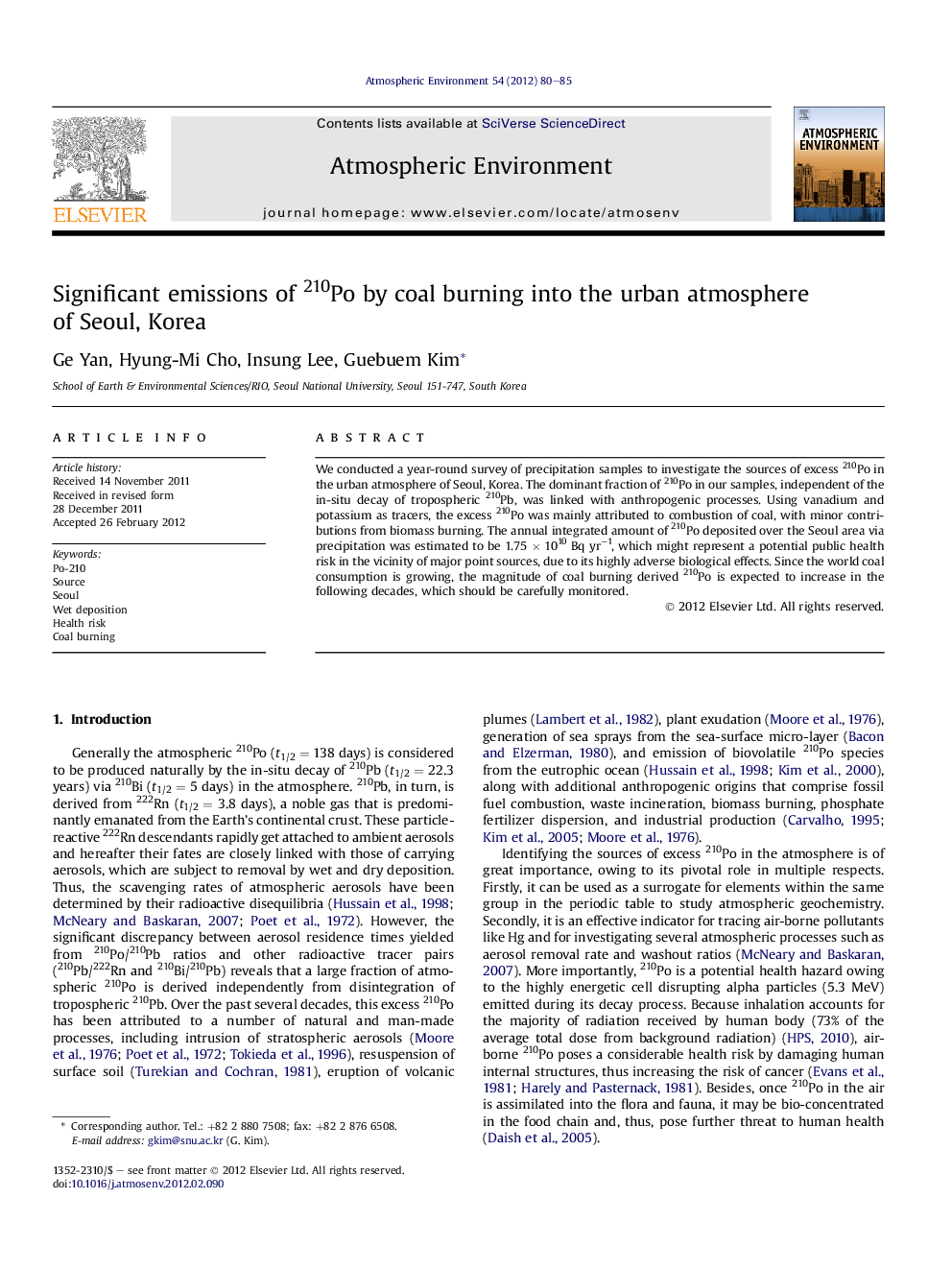| کد مقاله | کد نشریه | سال انتشار | مقاله انگلیسی | نسخه تمام متن |
|---|---|---|---|---|
| 4438773 | 1620417 | 2012 | 6 صفحه PDF | دانلود رایگان |

We conducted a year-round survey of precipitation samples to investigate the sources of excess 210Po in the urban atmosphere of Seoul, Korea. The dominant fraction of 210Po in our samples, independent of the in-situ decay of tropospheric 210Pb, was linked with anthropogenic processes. Using vanadium and potassium as tracers, the excess 210Po was mainly attributed to combustion of coal, with minor contributions from biomass burning. The annual integrated amount of 210Po deposited over the Seoul area via precipitation was estimated to be 1.75 × 1010 Bq yr−1, which might represent a potential public health risk in the vicinity of major point sources, due to its highly adverse biological effects. Since the world coal consumption is growing, the magnitude of coal burning derived 210Po is expected to increase in the following decades, which should be carefully monitored.
► We investigated precipitation samples for excess atmospheric 210Po source in Seoul.
► Coal burning is the dominant source.
► Biomass burning is an important secondary source.
► The anthropogenic 210Po can be a potential health hazard.
Journal: Atmospheric Environment - Volume 54, July 2012, Pages 80–85